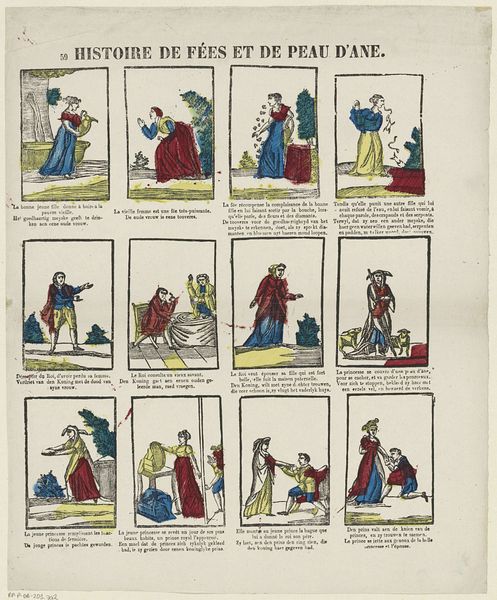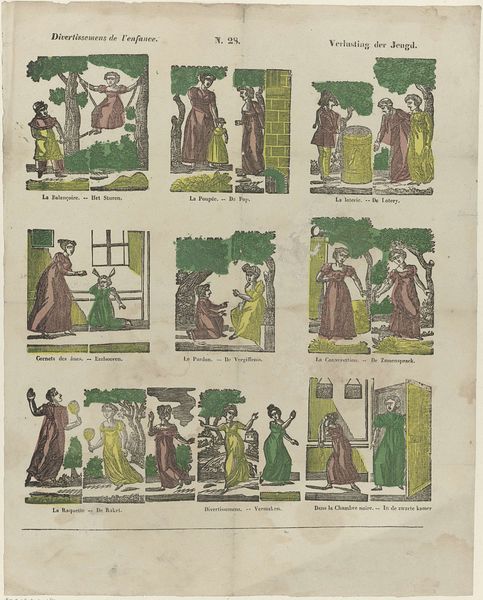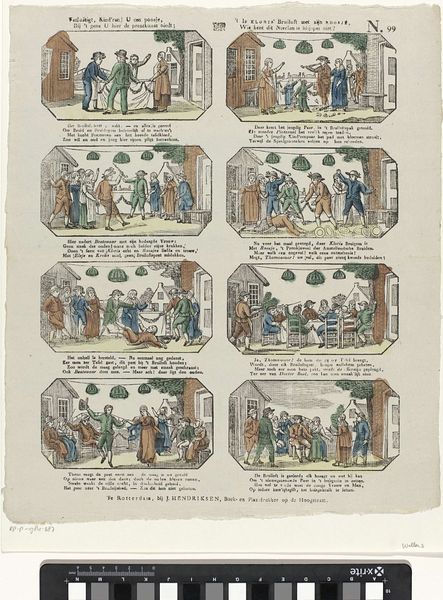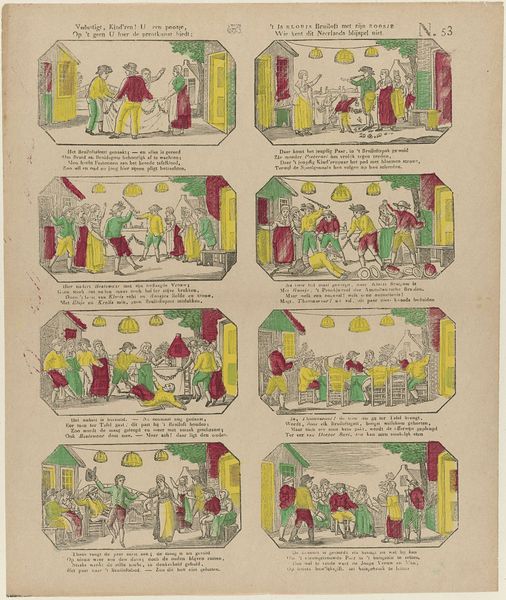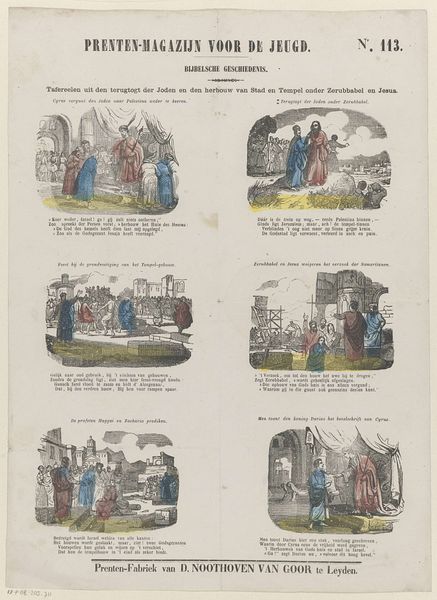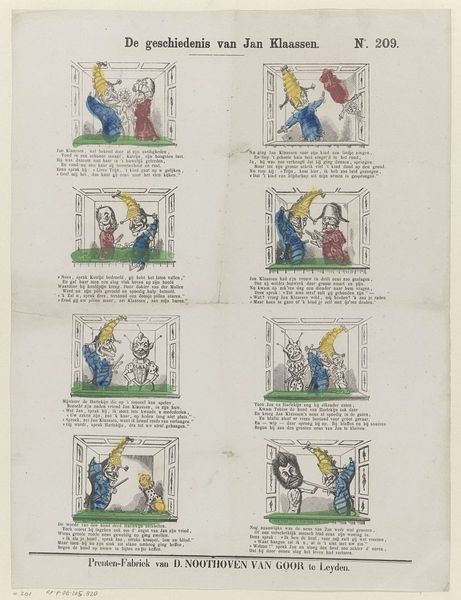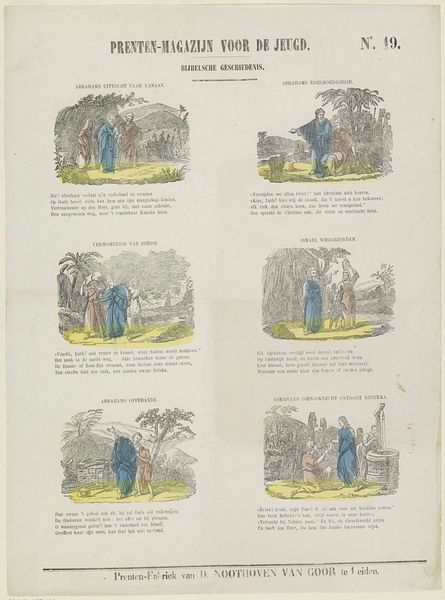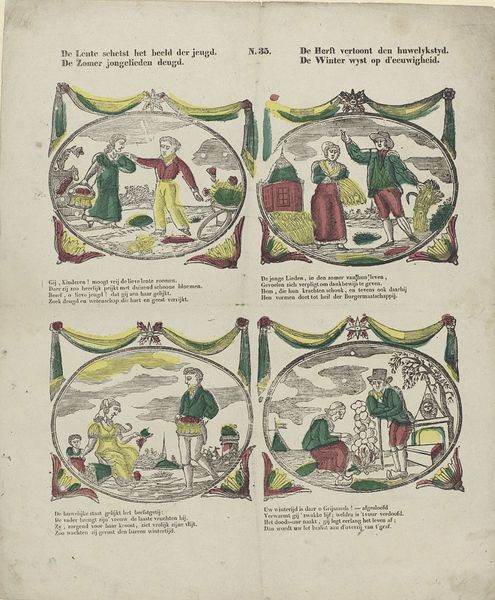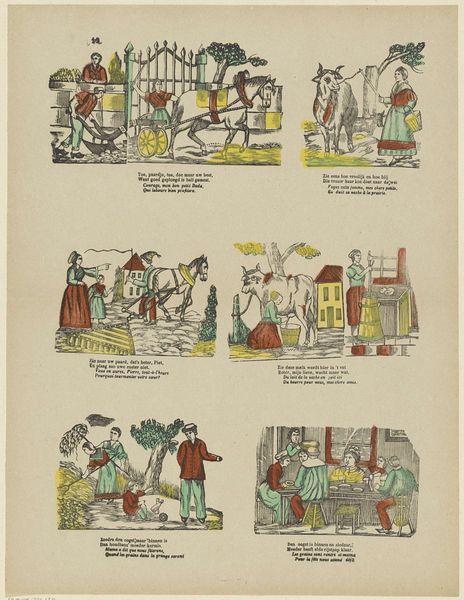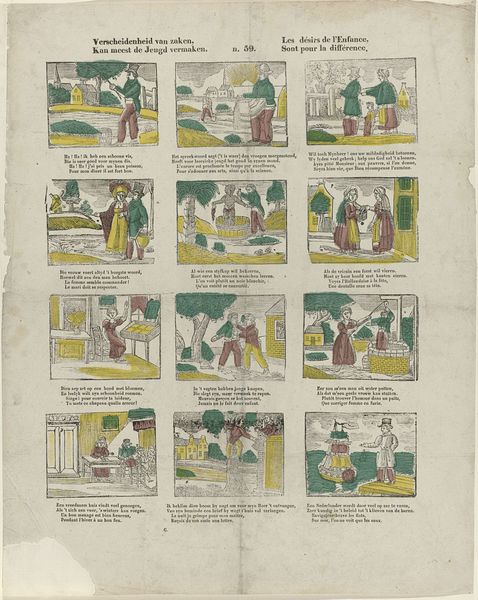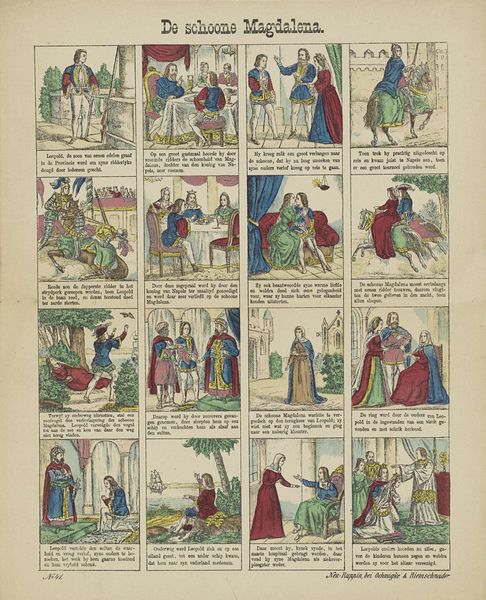
print, etching, engraving
#
narrative-art
# print
#
etching
#
figuration
#
romanticism
#
genre-painting
#
history-painting
#
engraving
Dimensions: height 415 mm, width 351 mm
Copyright: Rijks Museum: Open Domain
Editor: We’re looking at "Divertissemens de l'enface / Verlusting der jeugd," made sometime between 1833 and 1856 by Glenisson & Van Genechten. It's a print, using etching and engraving. It’s got this sort of… storybook quality, depicting children and women in different scenes, almost like little vignettes. What do you see in this piece? Curator: The layout itself tells a story, doesn't it? This isn't just a decorative print; it reflects a burgeoning interest in domesticity and childhood in 19th-century Europe. Consider the positioning of this work; most likely intended for a middle-class home, perhaps adorning the walls of a child's room or a parlor, signifying the importance placed on family values and moral education. Editor: Moral education, interesting. Can you elaborate on that? Curator: Look at the titles given to each scene. "La Leçon" (The Lesson), "La Conversation" (The Conversation)... These aren't merely snapshots of daily life; they present idealized versions of childhood interactions, suggesting proper behaviors and societal roles. It raises questions about how childhood was constructed and controlled within these emerging social structures. Notice how many feature an adult supervising a child. Editor: I didn’t really consider that! I was focused on it being, you know, pretty. But now that you mention the control aspect, even the image of children playing in “Divertissement” has this staged feel to it. Curator: Exactly! What we might initially perceive as innocent leisure is actually a carefully curated display of social norms and expectations. This piece provides us with insights into the public role of art and politics of imagery during that time. It reveals as much about the societal values of the 19th century. Editor: That’s really changed how I see the artwork now. It is much more than a quaint scene; it shows the values placed on the childhood experience during the early to mid 1800s. Thank you.
Comments
No comments
Be the first to comment and join the conversation on the ultimate creative platform.
